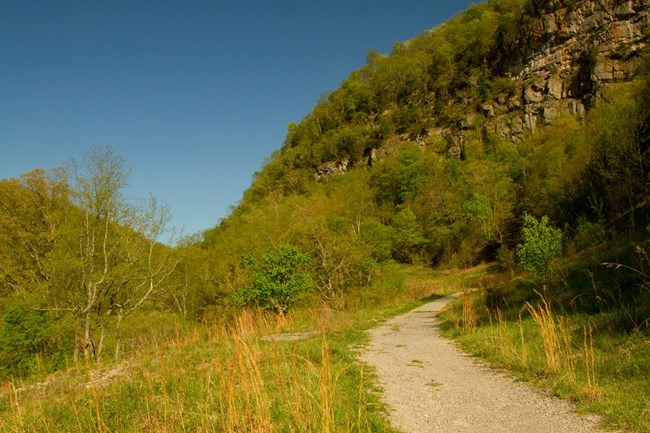Learn about NRCAs
The Natural Resource Condition Assessment (NRCA) Program provides framework, funding, and publishing support to parks to aid in the synthesis and documentation of natural resource conditions. Condition assessment reports are a tool to describe selected park resources, and record a snapshot of their current condition, identify trends, and identify potential or current threats and stressors. Understanding the condition and trend of natural resources is key for parks and NPS planners to appropriately prioritize and allocate stewardship resources.

NPS photo/Scott Teodorski.
Traditional NRCA Report: 2013
In an effort to better understand the natural resources and processes found within the park, a Natural Resource Condition Assessment was conducted and published in 2013. This assessment was a collaborative effort between the National Park Service and the University of Georgia. The team chose 16 natural resource topics to be evaluated:
- Ozone |
- Mammal communities |
||||||||
- Foliar injury |
- Water chemistry |
||||||||
- Cave meterology |
- Microorganisms |
||||||||
- Surface water dynamics |
- Invasive/exotic plants |
||||||||
- Vegetation communities |
- Forest pests |
||||||||
- Fish communitites |
- Reptile/Amphibian communities |
||||||||
- Bird communitites |
- Cave bats |
||||||||
- Rare plants |
- Land cover and land use change |
Qualitative condition ranks were provided for 13 of the 16 topics, while the other three topics were discussed and not ranked. Overall, one topic was ranked as excellent, seven topics were ranked as good, four were ranked as fair, and one was ranked as poor. The remaining three topics were not ranked due to lack of appropriate data or lack of appropriate ranking protocols. Although each condition is assigned a rank separately, it is important to note their potential to interact and influence other topics. A significant challenge to preserving natural resources in the park is considering these interactions and prioritizing management efforts to affect the most beneficial outcomes.
For other reports and natural resource datasets visit the NPS Data Store.
Source: NPS DataStore Collection 7765 (results presented are a subset). To search for additional information, visit the NPS DataStore.
Last updated: December 16, 2022
